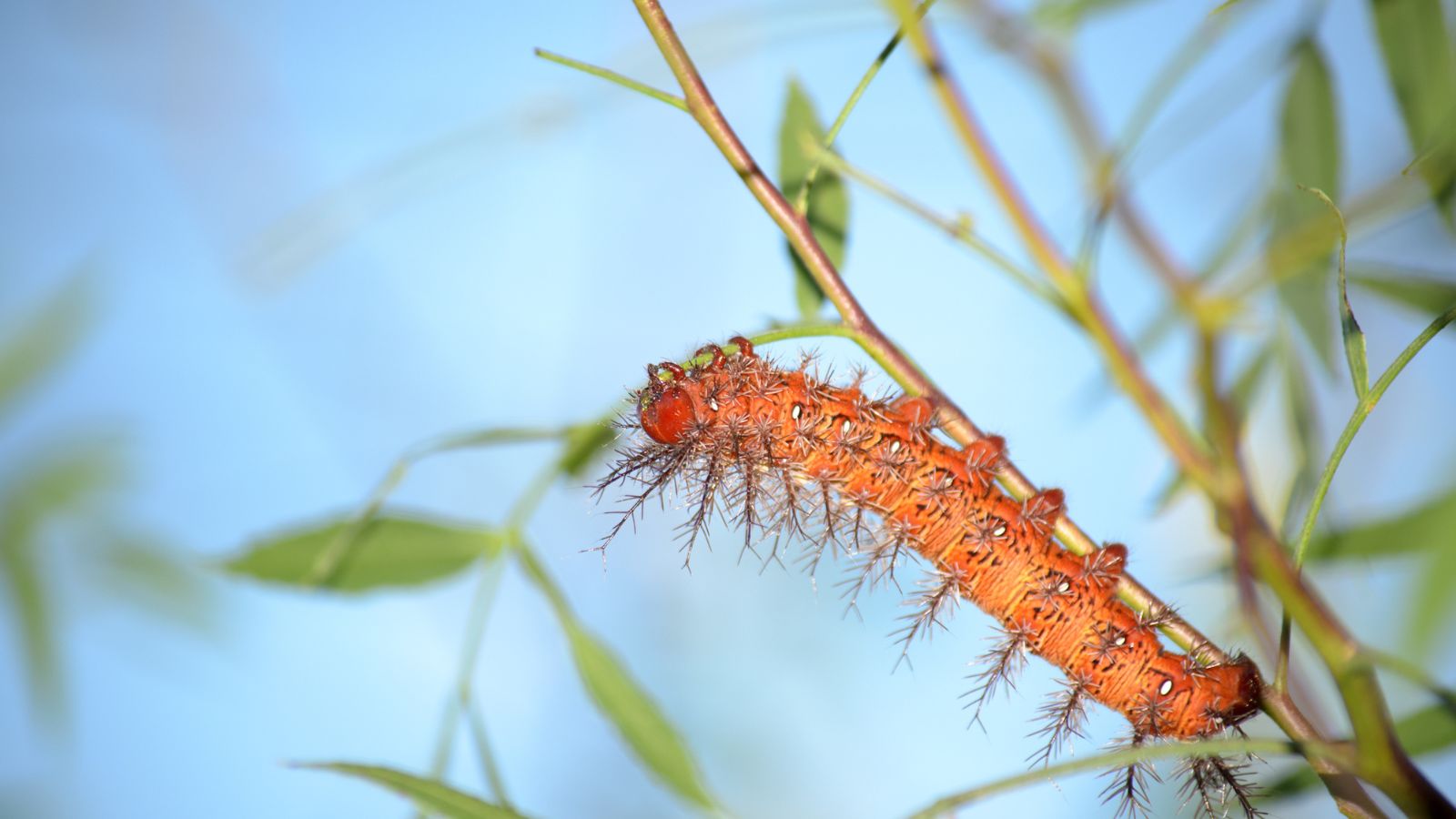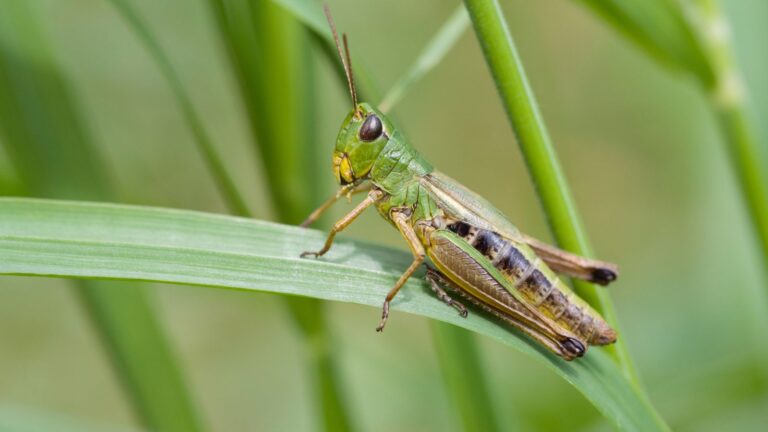Caring for a variety of houseplants, vegetable crops, or a garden full of vibrant flowers can be incredibly rewarding, but nothing is more disheartening for a gardener than seeing their efforts undone by pests. To ensure that you can do everything in your power to prevent this from happening, here are 16 common bugs that threaten plants and the ways in which you can get rid of them.
Spider Mites

Commonly found on strawberries and houseplants, spider mites leave fine webbing on plants. Patch Plants says, “Try holding a piece of paper under the infected plant’s leaves and shake gently. If you notice pepper-like specks on the page, they’re almost certainly spider mites.” To remove them, try gently washing your plants with water.
Leafminers

Leafminers are the larvae of some flies, moths, and beetles. Once the larvae are laid, they tunnel inside the leaves of your plants and cause visible damage, impacting the plant’s ability to photosynthesize. If you notice this damage, remove the infected leaves and consider hanging yellow sticky traps to reduce the number of pests.
Aphids

Aphids like roses, peppers, and tomatoes, and their “sap-sucking can cause a lack of plant vigor [and] distorted growth.” They also “often excrete a sticky substance (honeydew) on which sooty molds can grow,” according to the Royal Horticultural Society. To stop them, try neem oil, insecticidal soaps, and encouraging beneficial insects like ladybugs.
Slugs and Snails

With a particular taste for lettuce, strawberries, and hostas, slugs and snails are found in gardens across the country. Although easily picked off, if you want to avoid your plants being damaged, you could consider using diatomaceous earth, copper barriers, and bait traps.
Caterpillars

Hugely varying in size and color, some caterpillar species are more likely to cause damage to certain plants in your garden. Tomatoes, peppers, and eggplants, for example, often fall victim to the tomato hornworm caterpillar. To control these pests, you can pick them off your plants, and you can also try to encourage birds into your garden who will feast on them.
Scale Insects

Common on citrus trees, ferns, and ornamental shrubs, scale insects have a small, flat, shell-like appearance. According to Thompson & Morgan, “the more sap they drain from a plant, the worse off the plant will appear, with its leaves turning mottled and yellow, before finally dropping off.” To remove them, try horticultural oil, alcohol swabs, and introducing natural predators.
Mealybugs

Often found on orchids, succulents, and citrus plants, mealybugs leave cottony, white masses on plant stems and the underside of leaves due to their sap-sucking. When you spot this damage, try using a cotton swab dipped in alcohol, insecticidal soap, or neem oil to gently wipe down your plant.
Thrips

These tiny pests feast on roses, onions, and beans, causing stippled leaves and distorted flowers. To control them, try using reflective mulch to increase the light on the plant, blue sticky traps to catch the pests, and spinosad, which is toxic to the thrips.
Squash Bugs

These flat, brown pests are commonly found on squash, pumpkin, and cucumber plants and often cause yellow spots or wilting to the leaves. To avoid them damaging your crop, you can pick the bugs off by hand or cover the plants. Alternatively, you can try and encourage natural predators into your garden.
Grasshoppers

With long legs and an incredible ability to jump, grasshoppers are often found on lettuce, beans, and corn. They damage these plants by chewing on the leaves and stems, so you’ll want to make sure you deal with any infestations. Try using row covers, bird netting, and eco-friendly sprays.
Earwigs

Dark in color and identifiable by their impressive pincers, earwigs chew the edges of leaves and create holes in the petals of your dahlias, zinnias, and lettuce. To reduce the damage, try creating traps with rolled-up newspapers, sprinkling diatomaceous earth, and maintaining a clean garden.
Japanese Beetles

Highly destructive pests, these beetles have metallic blue-green bodies with bronze wings. The USDA says, “Japanese beetle adults attack the foliage, flowers, or fruits of more than 300 different ornamental and agricultural plants.” You should be able to pick them off by hand, or you can try neem oil.
Red Spider Mites

Red in color, these mites will attack a variety of different house plants, including palms and ficus, as well as outdoor plants such as strawberries. To spot them, check the underside of the leaves or look out for brown spots on the foliage. To control them, try washing your plants with water and increasing the humidity around the leaves.
Cutworms

These caterpillar-like pests can be easily spotted as they curl up when you disturb them. They feast on young vegetable plants such as tomatoes and brassicas, often cutting them off at the base and killing the plant. To avoid this, try using collars around the base of young plants and encouraging birds into your garden.
Whiteflies

According to Planet Natural, “Common on indoor plants, tomatoes, and in greenhouses, the whitefly (Trialeurodes vaporariorum) is a sap-sucking insect that is often found in thick crowds on the undersides of leaves.” To remove them, you can try yellow sticky traps, insecticidal soap, or encouraging natural predators.
Gypsy Moths

These brown, yellow, and black caterpillars are hairy and kill off the foliage on plants and trees, including oaks, willows, and aspen trees. As they commonly attack trees, it’s really only worthwhile to remove them from young plants, as they won’t have much of an effect on an established tree. You should be able to pick them off by hand, and it’s recommended that you wear gloves to do this.

